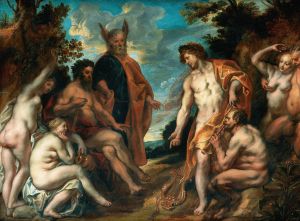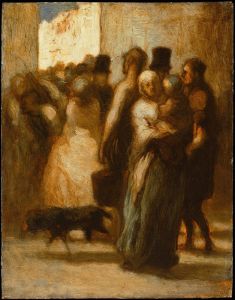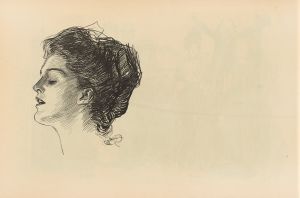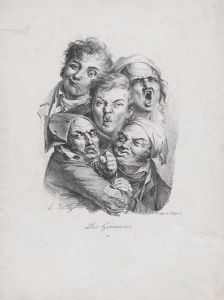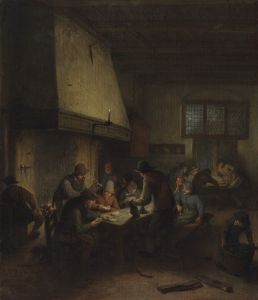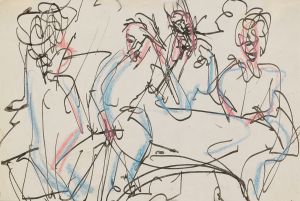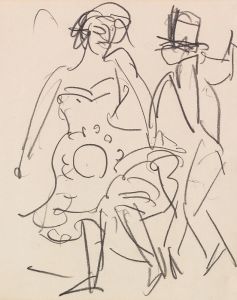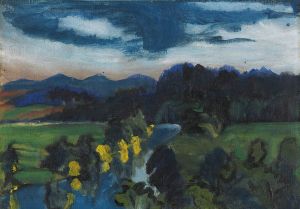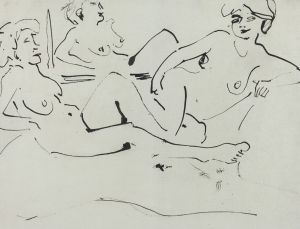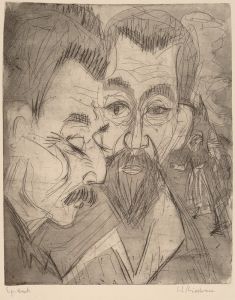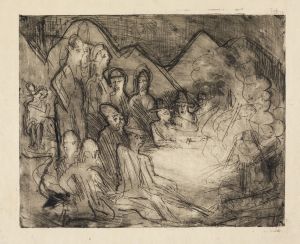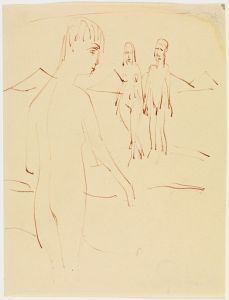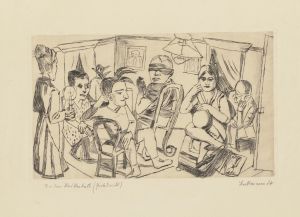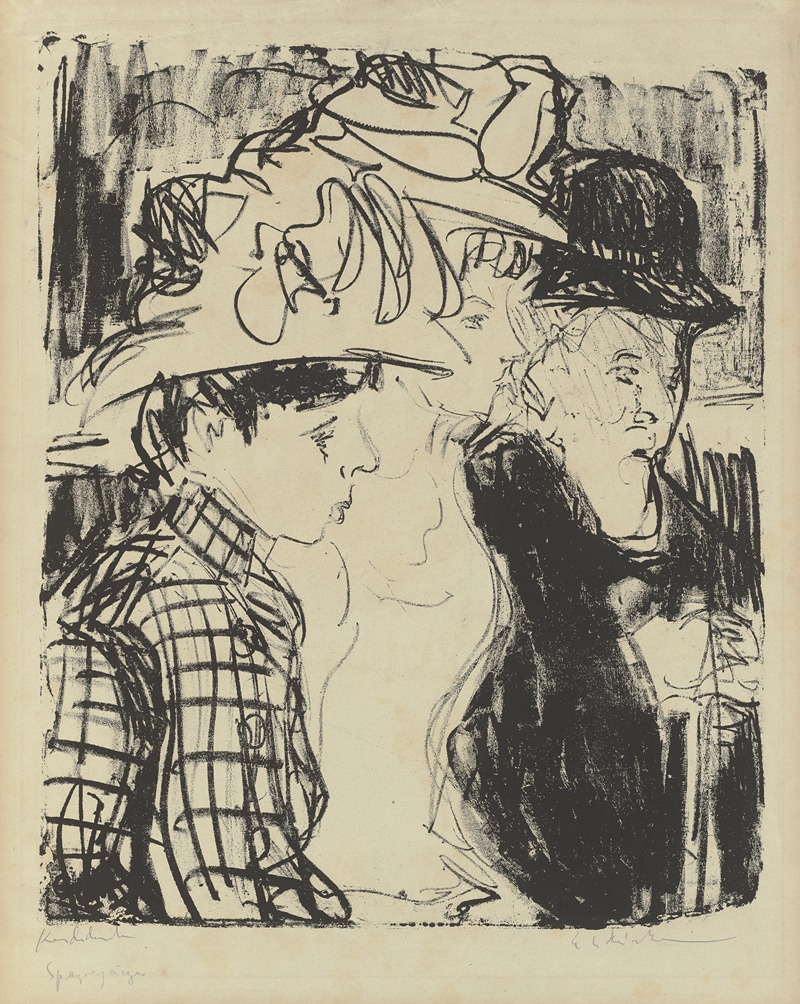
Spaziergänger
A hand-painted replica of Ernst Ludwig Kirchner’s masterpiece Spaziergänger, meticulously crafted by professional artists to capture the true essence of the original. Each piece is created with museum-quality canvas and rare mineral pigments, carefully painted by experienced artists with delicate brushstrokes and rich, layered colors to perfectly recreate the texture of the original artwork. Unlike machine-printed reproductions, this hand-painted version brings the painting to life, infused with the artist’s emotions and skill in every stroke. Whether for personal collection or home decoration, it instantly elevates the artistic atmosphere of any space.
Ernst Ludwig Kirchner was a prominent German expressionist painter and one of the founding members of the artist group Die Brücke (The Bridge), which played a pivotal role in the development of modern art in the early 20th century. Kirchner's work is characterized by its bold use of color, dynamic compositions, and a focus on urban life and the human figure. One of his notable works is "Spaziergänger," which translates to "Strollers" in English.
"Spaziergänger" is a painting that exemplifies Kirchner's expressionist style, capturing the essence of modern life and the bustling energy of city streets. The painting is known for its vivid colors and dynamic brushwork, which convey a sense of movement and vitality. Kirchner often depicted scenes of urban life, and "Spaziergänger" is no exception, as it portrays figures walking through a cityscape, likely inspired by the streets of Berlin, where Kirchner spent a significant portion of his career.
The painting reflects Kirchner's interest in the psychological and emotional aspects of modern life. The figures in "Spaziergänger" are often elongated and distorted, a characteristic feature of Kirchner's style, which he used to express the inner turmoil and alienation of individuals in the rapidly changing urban environment. This distortion also serves to emphasize the dynamism and energy of the scene, drawing the viewer into the experience of the city.
Kirchner's use of color in "Spaziergänger" is particularly striking. He employed a palette of bold, contrasting colors to create a sense of vibrancy and immediacy. This use of color is not merely decorative but serves to heighten the emotional impact of the painting, reflecting the intensity of modern urban life. The colors are applied in broad, expressive strokes, adding to the sense of movement and spontaneity.
The composition of "Spaziergänger" is carefully constructed to guide the viewer's eye through the scene. Kirchner often used diagonal lines and tilted perspectives to create a sense of depth and movement, techniques that are evident in this painting. The figures are positioned in such a way that they seem to be moving towards the viewer, enhancing the feeling of immediacy and engagement.
"Spaziergänger" is a testament to Kirchner's ability to capture the spirit of his time. It reflects the anxieties and excitements of life in a modern city, a theme that resonated with many artists of the expressionist movement. Kirchner's work, including "Spaziergänger," had a significant influence on the development of modern art, inspiring subsequent generations of artists to explore new ways of expressing the human experience.
Throughout his career, Kirchner faced numerous challenges, including the impact of World War I and the rise of the Nazi regime, which labeled his work as "degenerate art." Despite these obstacles, Kirchner's legacy endures, and his paintings continue to be celebrated for their innovative approach and emotional depth. "Spaziergänger" remains an important example of his contribution to the expressionist movement and his exploration of the complexities of modern life.





